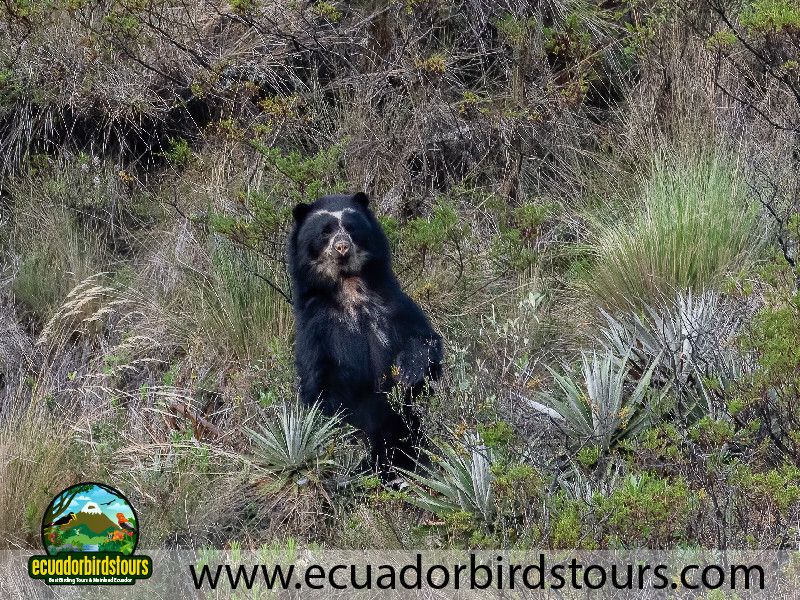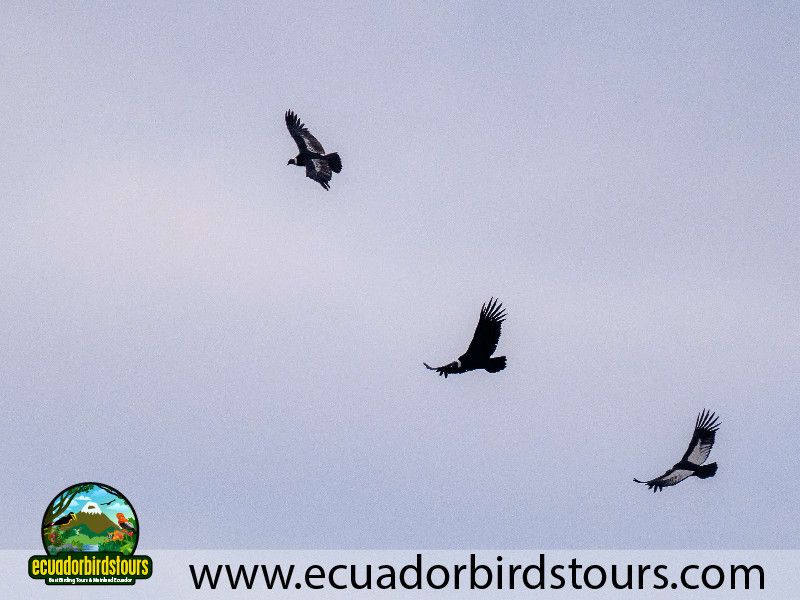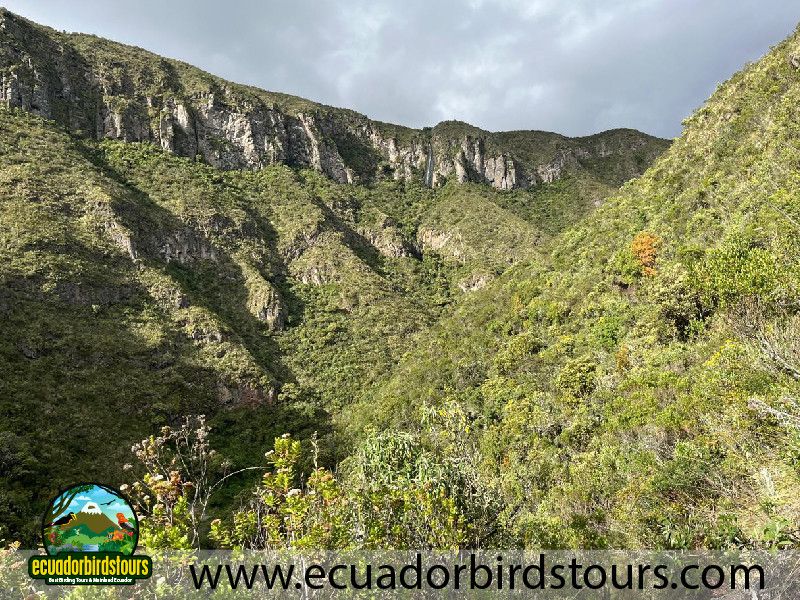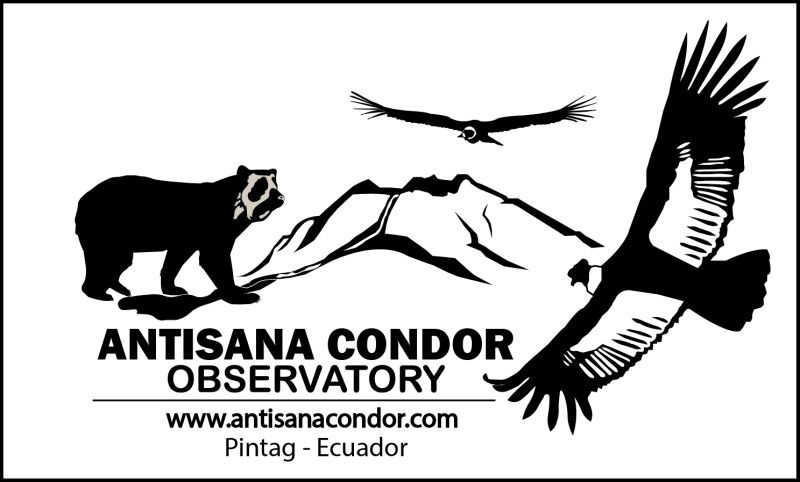Antisana Condor Observatory Reforestation Project
About
- We aim to plant 10,000 native andean trees by the end of 2025
- To create a natural corridor for the Spectacled Bear and other wildlife between Secas Lagoon and Antisana National Park
- To protect the habitat of the Andean Condor and Hummingbirds throught conservation efforts
- To build an interpretation center to create awareness to local people about the importance of the Paramo ecosystem and their wildlife
Conservation of Flora and Fauna
Our aim is to protect this fragile ecosystem in the Andean Paramo and create a natural corridor for future generations! Below some of the species that live in our Reserve.

Spectacled Bear
The Spectacled Bear can be frequently observed from our Antisana Condor Observatory. They use this corridor for feeding of Achupallas and crossing between Antisana and Cayambe Coca National Park.
- Habitat & Distribution: Found in Andean cloud forests, páramo, and montane forests at elevations between 2,000–4,500m. Key habitats include Antisana National Park, Cayambe-Coca, and Podocarpus National Park.
- Reproduction: Females typically give birth to 1–2 cubs per year, usually between November and February after a gestation period of about 6–8 months. Cubs stay with their mother for up to two years.
- Diet: Omnivorous, feeding on bromeliads, fruits, berries, palm hearts, small mammals, and carrion. Plays a key role in seed dispersal.
- Threats
Habitat Loss: Deforestation for agriculture, cattle grazing, and urban expansion reduces their range.
Human-Wildlife Conflict: Occasionally preys on livestock, leading to retaliatory killings by farmers.
Climate Change: Alters páramo and montane forest ecosystems, affecting food availability.
Conservation Status: Vulnerable, with an estimated population of 2,500–10,000 individuals in the wild. Protected in Ecuadorian reserves, but habitat fragmentation remains a challenge.

Andean Condor
Did you know that there are only around 150 Andean Condors left in the Ecuadorian Andes. In our reserve we have observe them between 20 - 40 condors that overnight in our cliff!
- Habitat & Distribution: High-altitude páramo, cliffs, and open grasslands in Ecuador, mainly found in Antisana National Park, Cotopaxi, and Chimborazo reserves. Prefers rugged landscapes with strong air currents for soaring.
- Reproduction: Lays one egg every 2 years, with both parents sharing incubation duties for about 60 days. The chick remains dependent on parents for up to two years, leading to a slow reproductive rate.
- Diet: A scavenger, feeding primarily on carrion (dead deer, cattle, and other large mammals). Plays a crucial role in the ecosystem by preventing disease spread from decaying animals.
- Threats:
Habitat Loss: Expansion of agriculture, deforestation, and infrastructure development reduce nesting and feeding areas.
Poisoning: Farmers sometimes poison carcasses to kill predators like pumas or foxes, unintentionally affecting condors.
Human-Wildlife Conflict: Some communities believe condors attack livestock, leading to persecution.
Conservation Status: Critically Endangered in Ecuador, with fewer than 150 individuals remaining. Protected in national parks, with conservation programs focusing on breeding, food supplementation, and awareness campaigns.

Andean Plants
The Andean páramo is home to a unique array of native plant species adapted to its high-altitude, cold, and humid conditions. Here are some native plants that we planted in our reserve:
- Valeriana rigida
A low-growing herbaceous plant that contributes to the dense vegetation of the páramo. - Hypericum laricifolium (or Romerillo)
A yellow-flowering shrub that thrives in páramo conditions. - Chuquiraga
A shrubby plant with orange tubular flowers, pollinated by hummingbirds. - Baccharis
Shrubby plants that are common in páramo and transition zones. - Fuchsia vulcanica
- Wanto to attract Sword-billed Hummingbird











